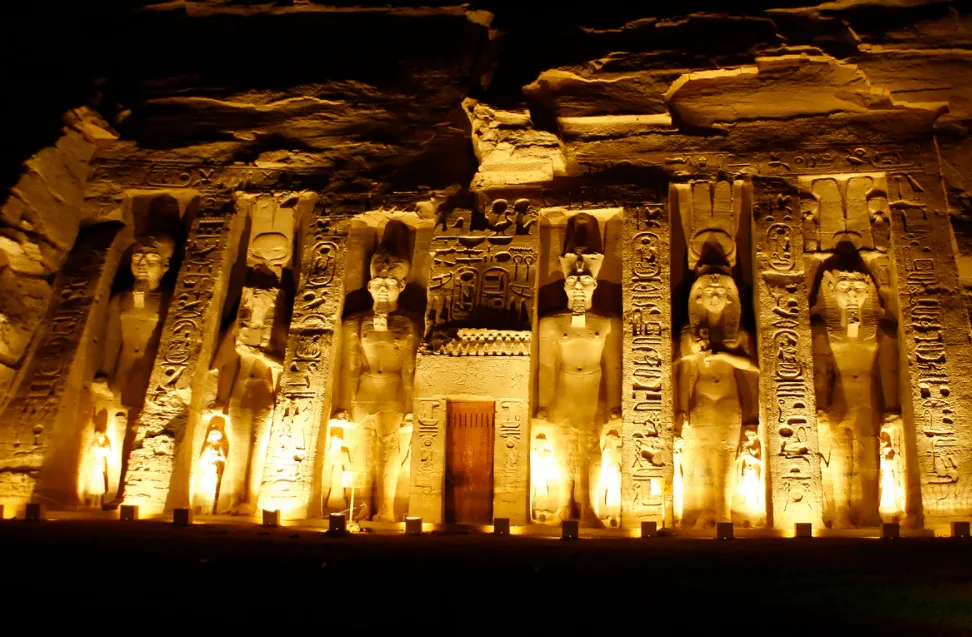Did you know that one of the most iconic Egyptian attractions was completely relocated in the 1960s?
In this post, you’ll discover the ultimate list of facts about Abu Simbel and its fascinating temples.
1. Abu Simbel is located in the south of Egypt
Abu Simbel is a small village in the extreme south of Egypt, not too far from the border with Sudan. It’s part of the southernmost Governorate of Upper Egypt called Aswan and about 230 kilometers (140 miles) to the southwest of the city of Aswan.
It’s famous for its two massive rock temples called the Great Temple and the Small Temple, which are both located on the western bank of Lake Nasser.
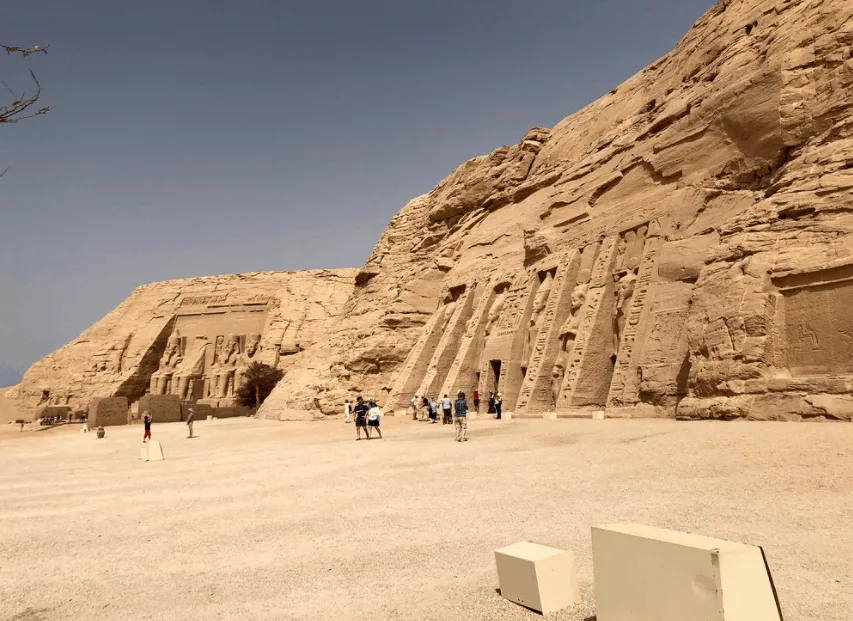
2. The temples are part of a larger UNESCO World Heritage Site
These two massive temples are part of a larger complex that is referred to as the “Nubian Monuments.” The area that was declared a UNESCO World Heritage site runs all the way from Abu Simbel upriver to Philae Island near Aswan.
Yes, that’s right north of the important Aswan Dam!
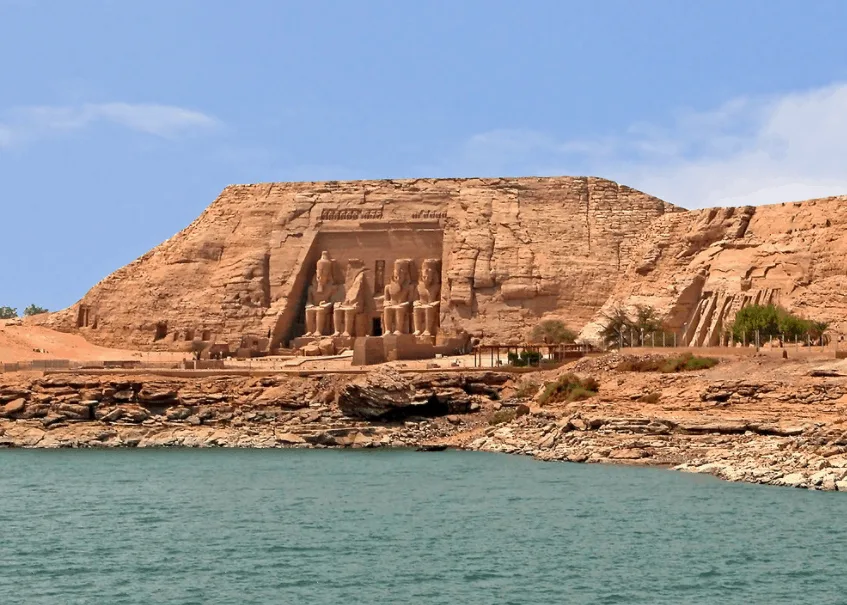
3. They were built by Pharaoh Ramesses II
The twin temples were built in the 19th dynasty under the rule of Pharaoh Ramesses II, also known as Ramesses the Great, between 1279 and 1213 B.C.
It’s estimated that the construction of both temples took about 20 years and started in the year 1264 B.C., which means they were completed around 1244 B.C.
Ramesses II was one of the most powerful and important Pharaohs of the New Kingdom. To emphasize this he was given the nickname “Great Ancestor” by his descendants for many centuries after his death.
We tend to assume that the temples of Abu Simbel and his numerous other building projects had something to do with that.
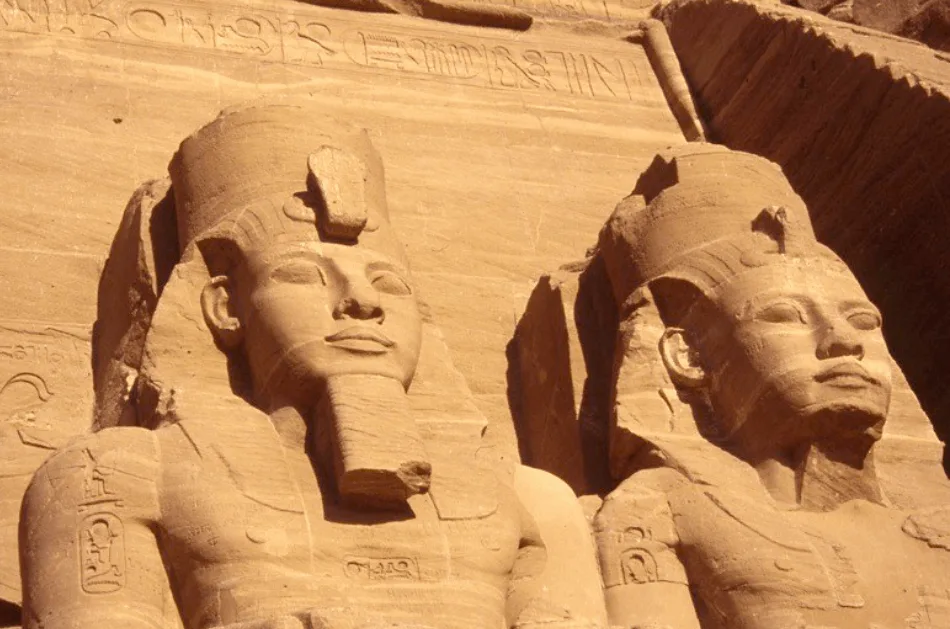
4. The two temples were dedicated to the Pharaoh and his wife
The Great Temple at Abu Simbel was dedicated to Ra-Harakhty, Ptah, and Amun, the three main Gods at the time the temples were constructed. It features many statues of the deified Ramesses the Great as well.
The Small Temple was dedicated to the goddess Hathor who was personified by one of the numerous wives of Ramesses, and most probably his most favorite one, Nefertari.
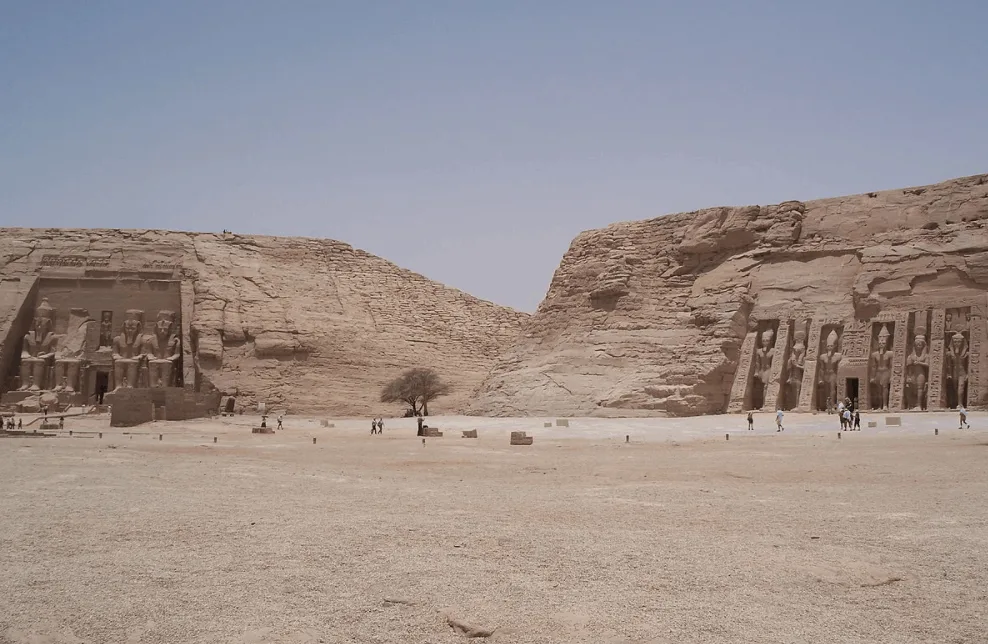
5. It was only the second temple dedicated to a Pharaoh’s wife
One of the most remarkable facts about Abu Simbel is that the Small Temple was only the second temple in all of Ancient Egypt that was dedicated to the Pharaoh’s wife.
This had only happened when Pharaoh Akhenaten had dedicated a temple to his beloved Royal wife Nefertiti, nearly 100 years earlier. Nearly 200 years earlier, a female Pharaoh built her own temple as well, the Temple of Hatshepsut.
Did we say that Nefertari was Ramesses the Great’s favorite wife?
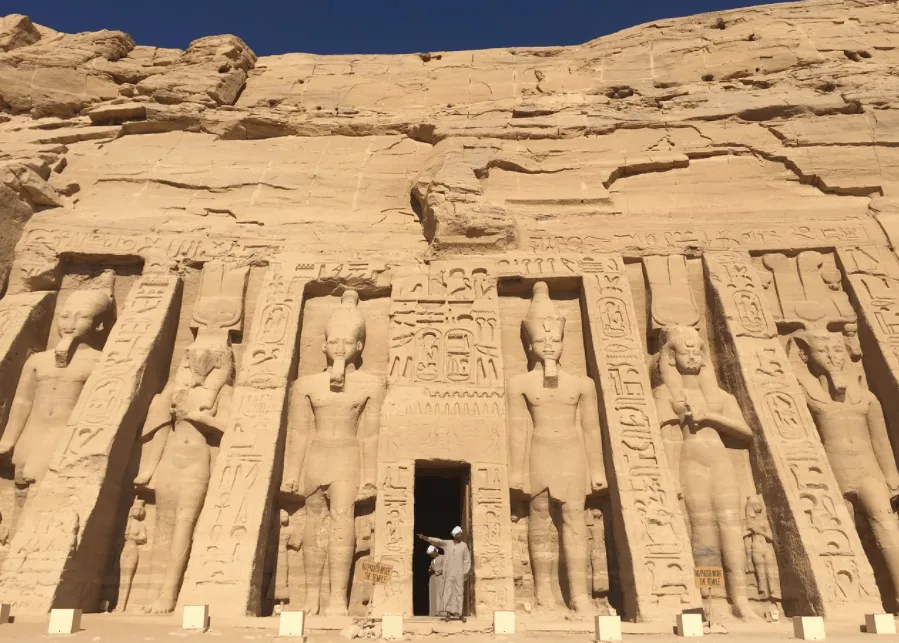
6. The temples had a different name in Ancient Egypt
As you probably can expect, the temple complex wasn’t referred to as “Abu Simbel” back in the day of the Pharaohs. It was referred to back then as the “Temple of Ramesses, beloved by Amun.”
7. It’s famous because of its 4 colossal Statues near the entrance
The temples of Abu Simbel are famous because of the iconic reliefs that were carved out of the rocks.
The Great Temple has 4 massive statues that stand about 20 meters (66 feet) tall and all depict a deified Ramesses II.
The Small Temple has 6 of these statues which stand about 10 meters tall (33 feet) and depict both the Pharaoh and his wife Nefertari, depicted as the goddess Hathor.
One of the 4 statues of the Great Temple is damaged because of an earthquake and lost its head and torso.
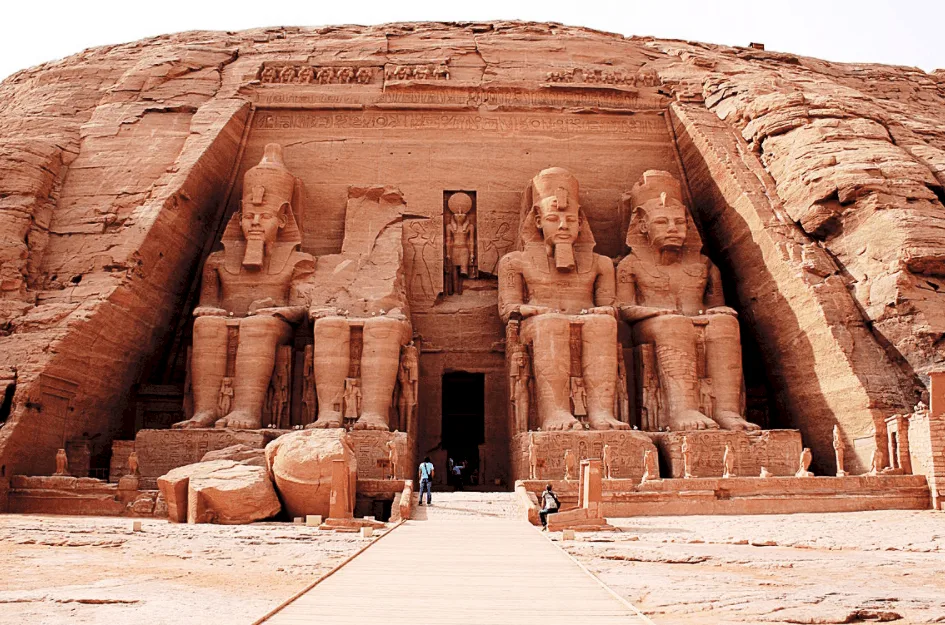
8. The Great Temple’s interior is huge
The Great Temple’s interior resembles that of most temples of Ancient Egypt. It has a large entrance hall with statues on both sides and which is about 18 meters (59 feet) long and 16.7 meters (55 feet) wide.
This is followed by multiple other rooms which become smaller and smaller as we get closer to the sanctuary of the temple.
One of the most remarkable facts about Abu Simbel is that the temples are rather complex as they also contain a lot of side chambers which all depict various scenes with Ramesses and his wife Nefertari.
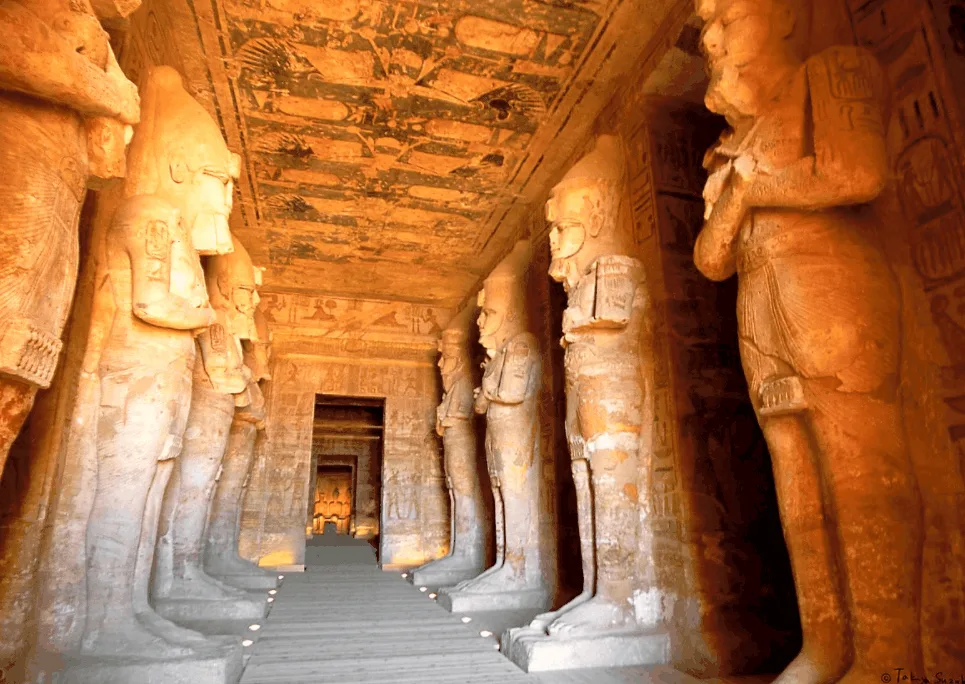
9. The temple is perfectly aligned with the sun
We all know that the Ancient Egyptians were not only great engineers but also great astronomers. It’s believed that they managed to build the temples in Abu Simbel in such a way that they were perfectly aligned with the sun.
On certain dates of the year, the rays of the sun would highlight the statues of the deified Ramesses. To make it even more fascinating, one statue, that of Ptah, a god connected with the realm of the dead, remained in the dark.
It’s believed that this happened on October 22 and February 22, the Pharaoh’s birthday and coronation day respectively.
10. The “Small Temple” is not that small
The Small temple is located about 100 meters (330 feet) to the northeast of the Great Temple and has a similar layout. What’s remarkable is that it’s one of the few times that the Pharaoh’s wife had statues of the same size as those of her King.
The Small Temple’s interior is equally huge and the decorations are for the most part focused on Nefertari as she is depicted in various scenes as the goddess Hathor.

11. The temple complex was covered in sand until the early 19th century
By the 6th century A.D., the temples were already covered in sand up to the knees of the statues of Ramesses the Great. After that, the temples got completely covered and lost in history until a Swiss traveler named Johann Ludwig Burckhardt found the top part of the Great Temple and started digging in 1813.
It wasn’t until the year 1817 though that an Italian explorer named Giovanni Belzoni found an entry to the temple, officially becoming the first man to set foot inside the Great Temple at Abu Simbel in numerous centuries.
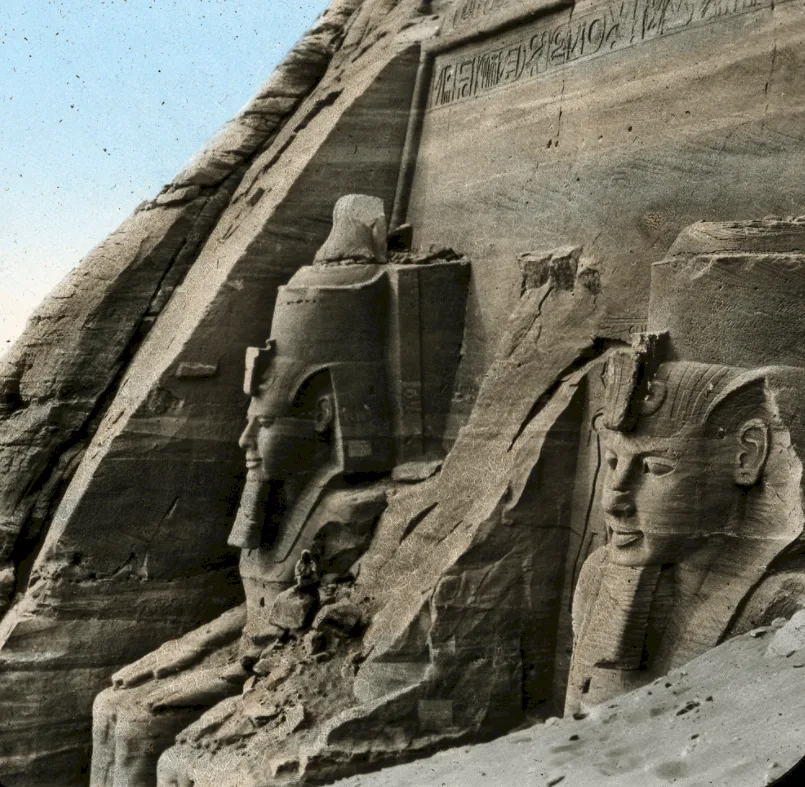
12. The temples were completely relocated to make way for a dam
Because of the construction of the Aswan Dam in the 1960s and 1970s, Lake Nasser was formed. The temples of Abu Simbel were located right inside this artificial lake and would have been submerged if no action was taken.
One of the most astounding facts about Abu Simbel is that to protect some of the most beautiful temples of Ancient Egypt, a massive plan was conceived to relocate the entire temple complex.
With the expertise of Polish archaeologist Kazimierz Michałowski from the Polish Centre of the Mediterranean Archaeology University of Warsaw, the temples were moved 65 meters higher and 200 meters away from the river to avoid being lost.

13. An alternative plan to save the temples was rejected
One of the original plans wasn’t to relocate the temples but to build a small freshwater dam around them. This would have meant that the temples would have been submerged and that underwater viewing chambers would have given access to it.
Luckily, this plan wasn’t approved and the temples were relocated instead.
14. The relocation was a huge endeavor
It’s fair to conclude that this was a massive endeavor, probably of the same scale as actually building the temples from scratch! It started in 1964 and was completed by 1968.
The new location consists of an artificial hill that was built above Lake Nasser and the temples were completely dismantled and reassembled.
The project, which was part of the UNESCO Nubian Salvage Campaign, has been described as one of the most challenging tasks in archaeological history!
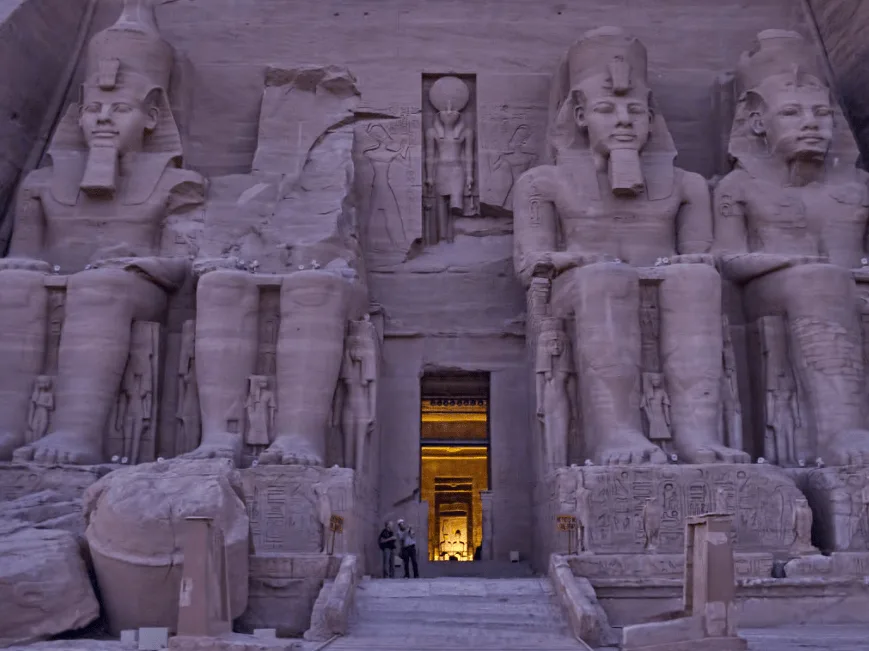
15. And an expensive one as well
Some sort of fundraiser was started in the year 1959, and it was good they started this early because the project was extremely costly. The cost of the project at the time was about USD 40 million, which is the equivalent of over USD 300 million today!
But then again, fascinating landmarks like these must be preserved at all costs, right?
Abu Simbel has been a popular tourist attraction ever since and is visited by people arriving in busses from Aswan or by plane, arriving at the specially constructed airport near the temple complex.
All we can say is, that it’s most definitely worth a visit!
